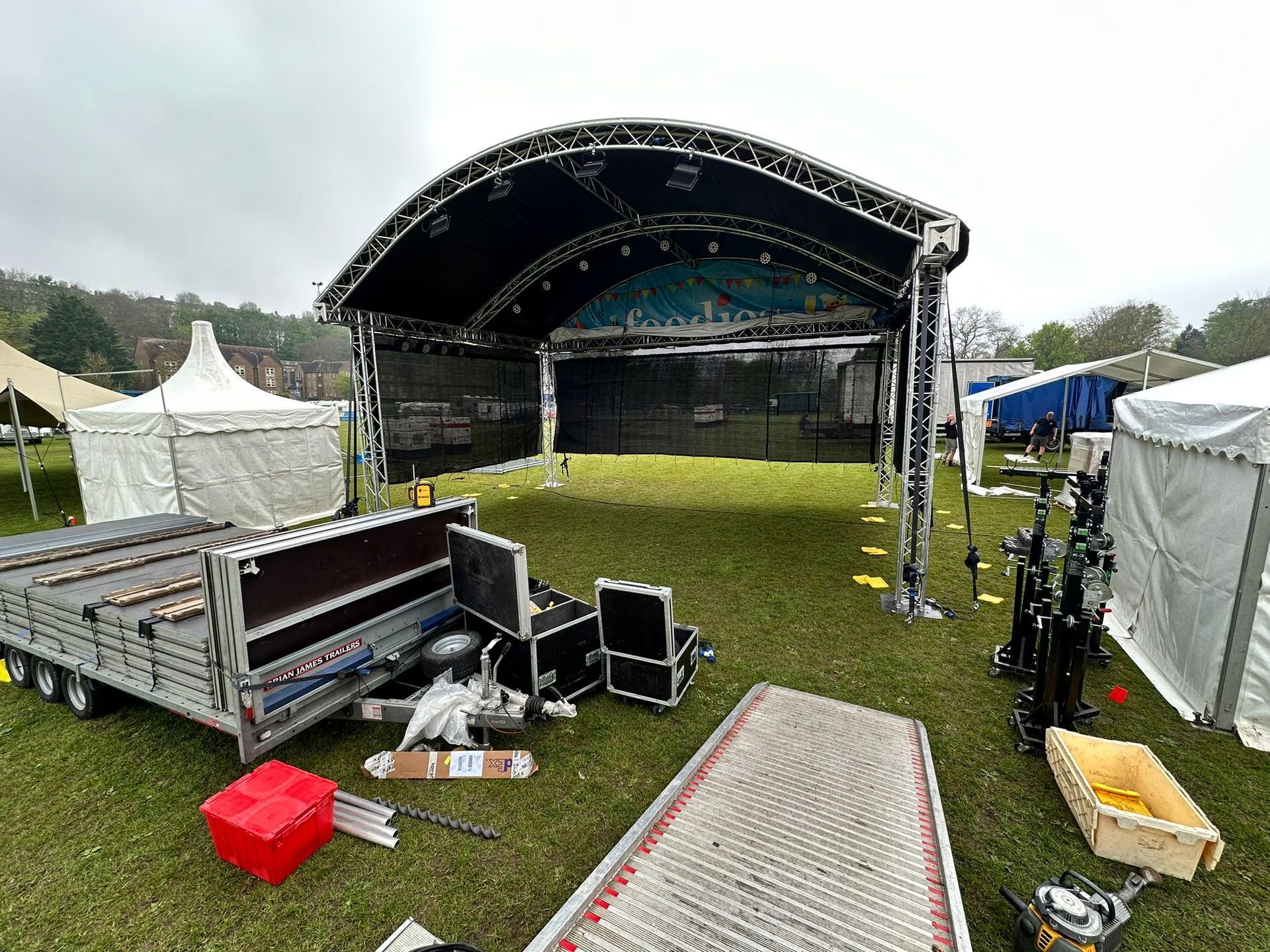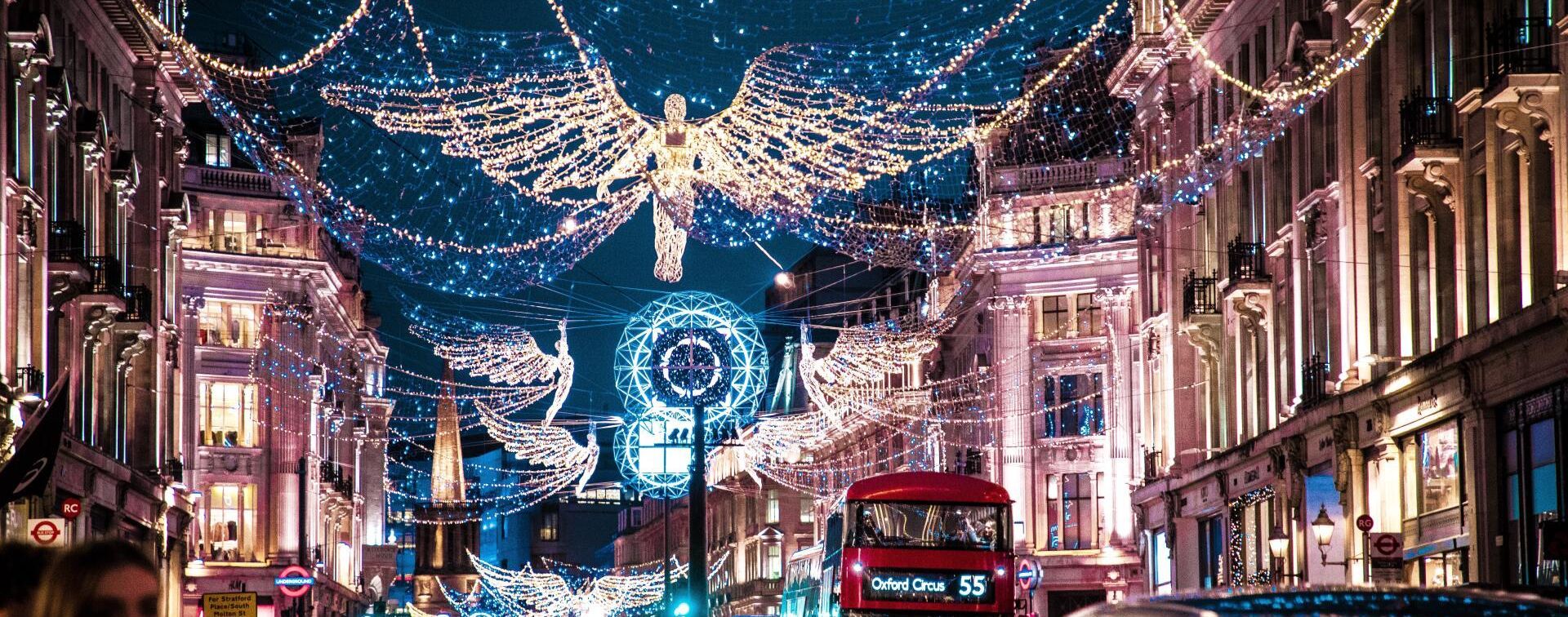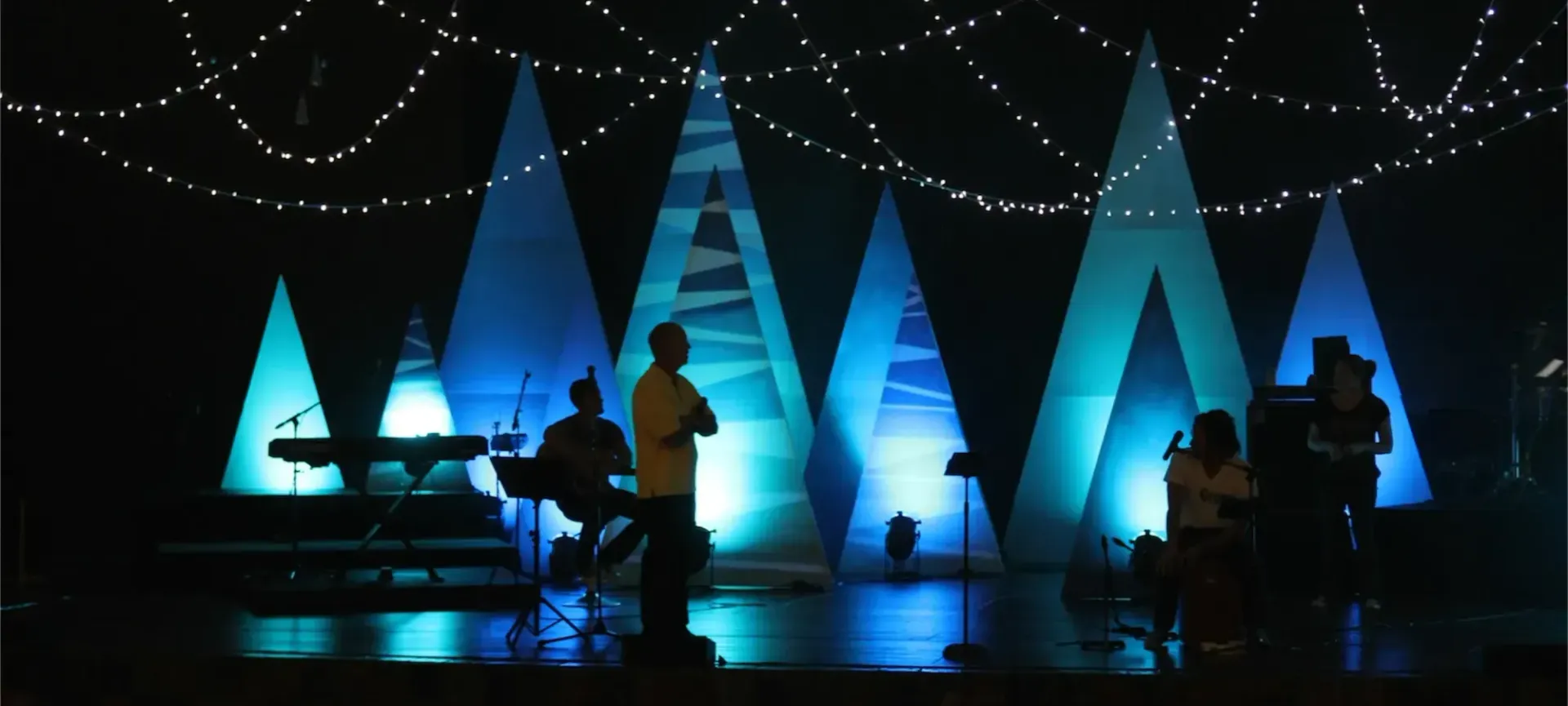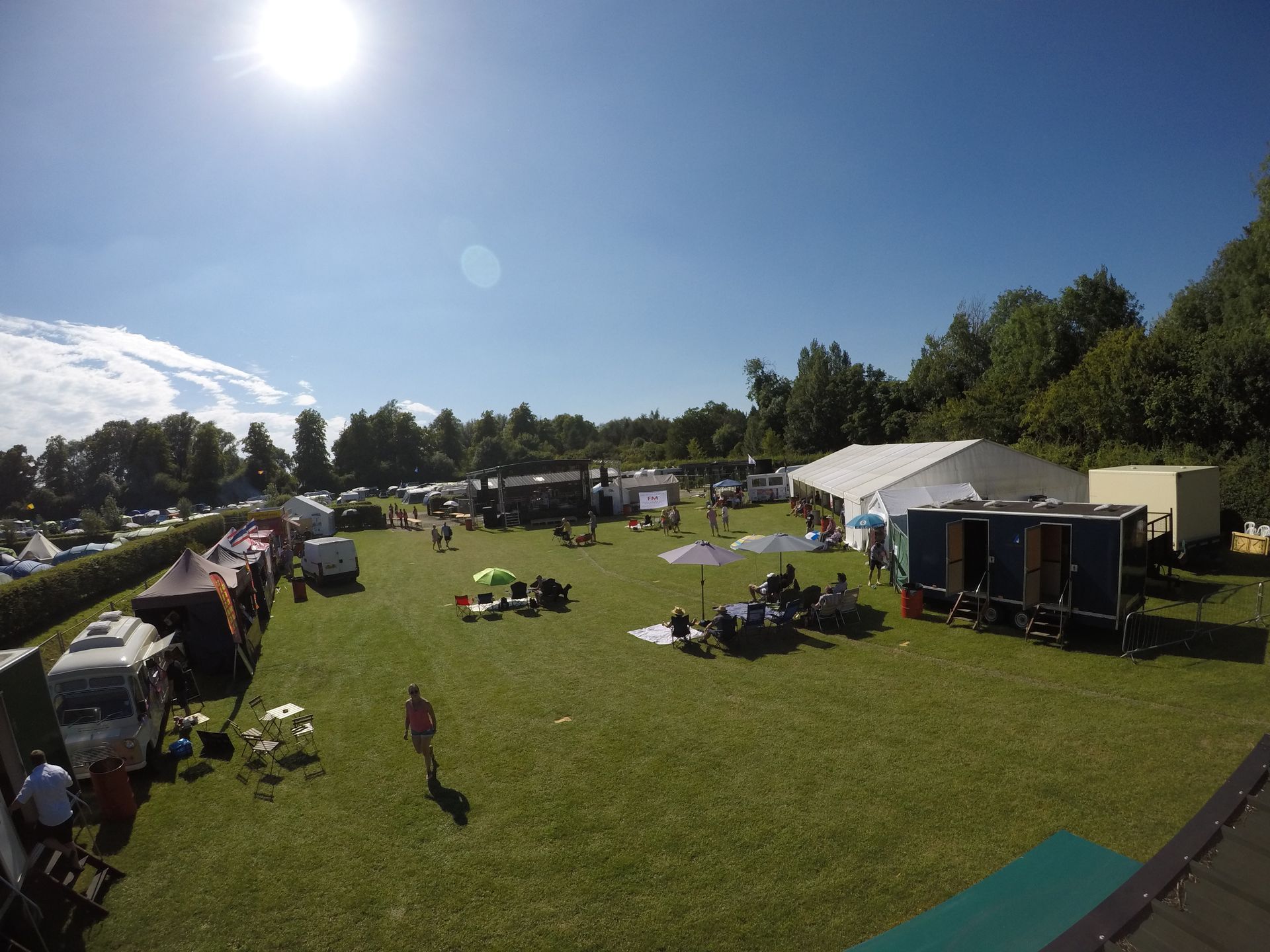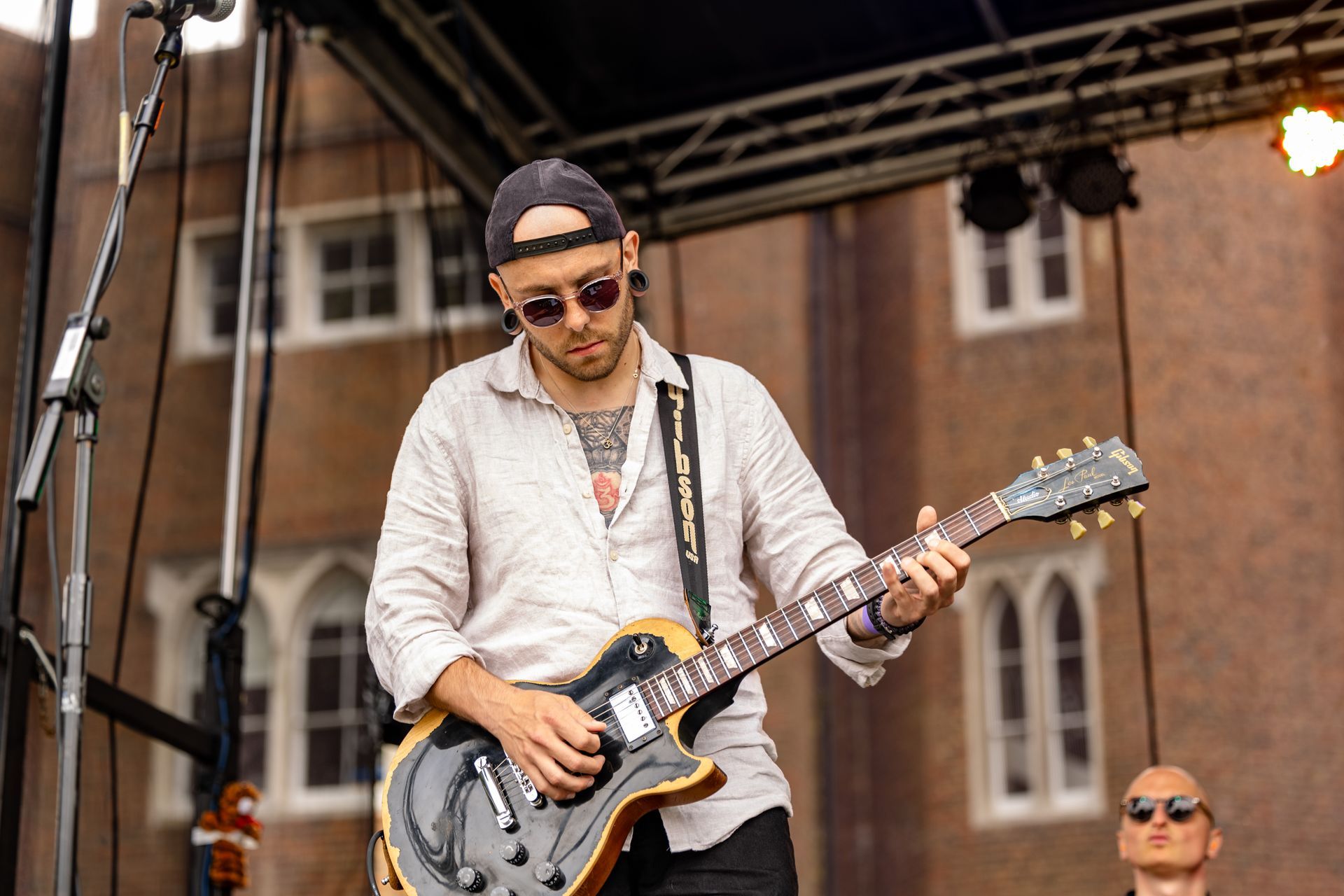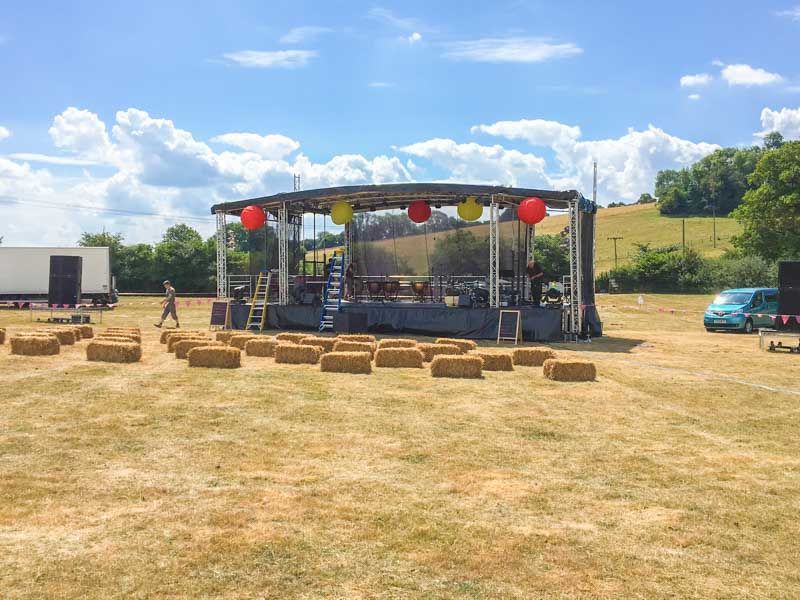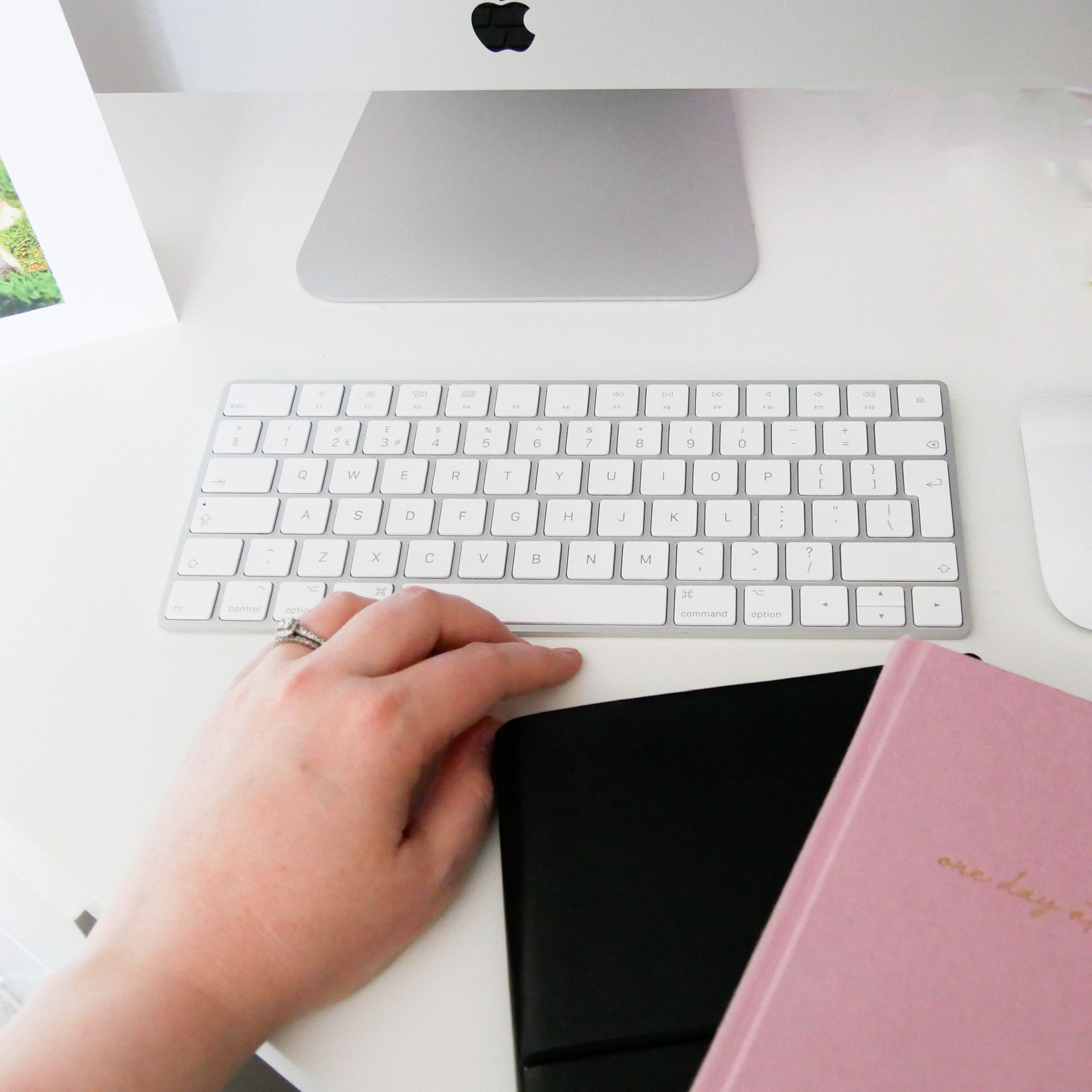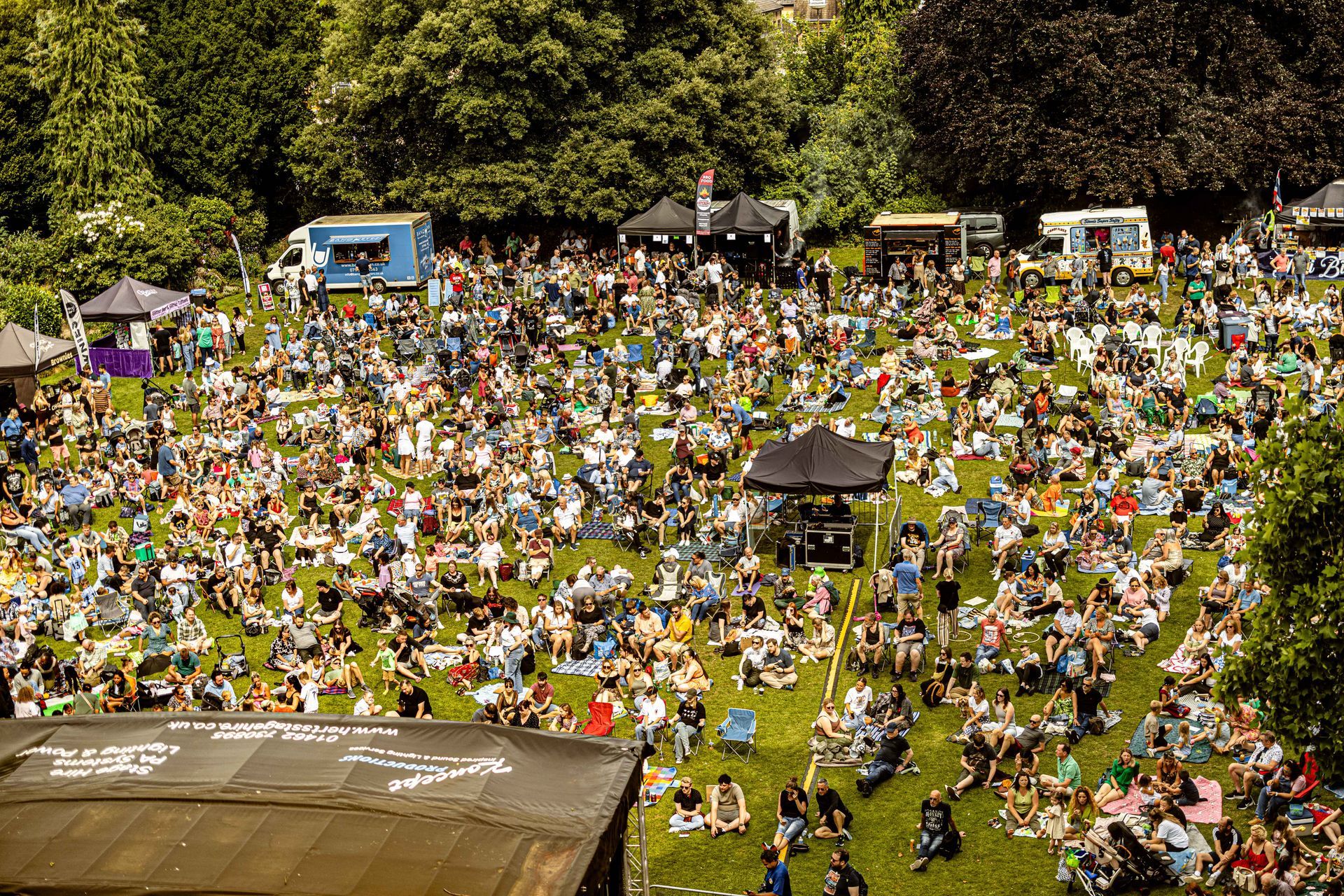Martin Ruff
Case Study - Socially Distanced Events
We weren't sure ourselves until July 2020 when we were approached by one of our regular clients to provide a service for a socially distanced event for up to 1000 people.
At first we thought it was wishful thinking, having 1000 people attend an event was surely against the rules, but further talks led us to understand the promoters had been in touch with the local council and they had found a solution that might could work.
At the time the rules were clear, no more than 6 people could socialise together outside, but if the venue was set up in such a way that each group of six were segregated from any other group by at least 3 metres then the council were happy.
The only downside was that there were also rules on the volume of the music. The council required the volume across the site to be at a level such that each group of six could communicate without the need to shout at each other. This meant rethinking the way outdoor concert sound is installed.
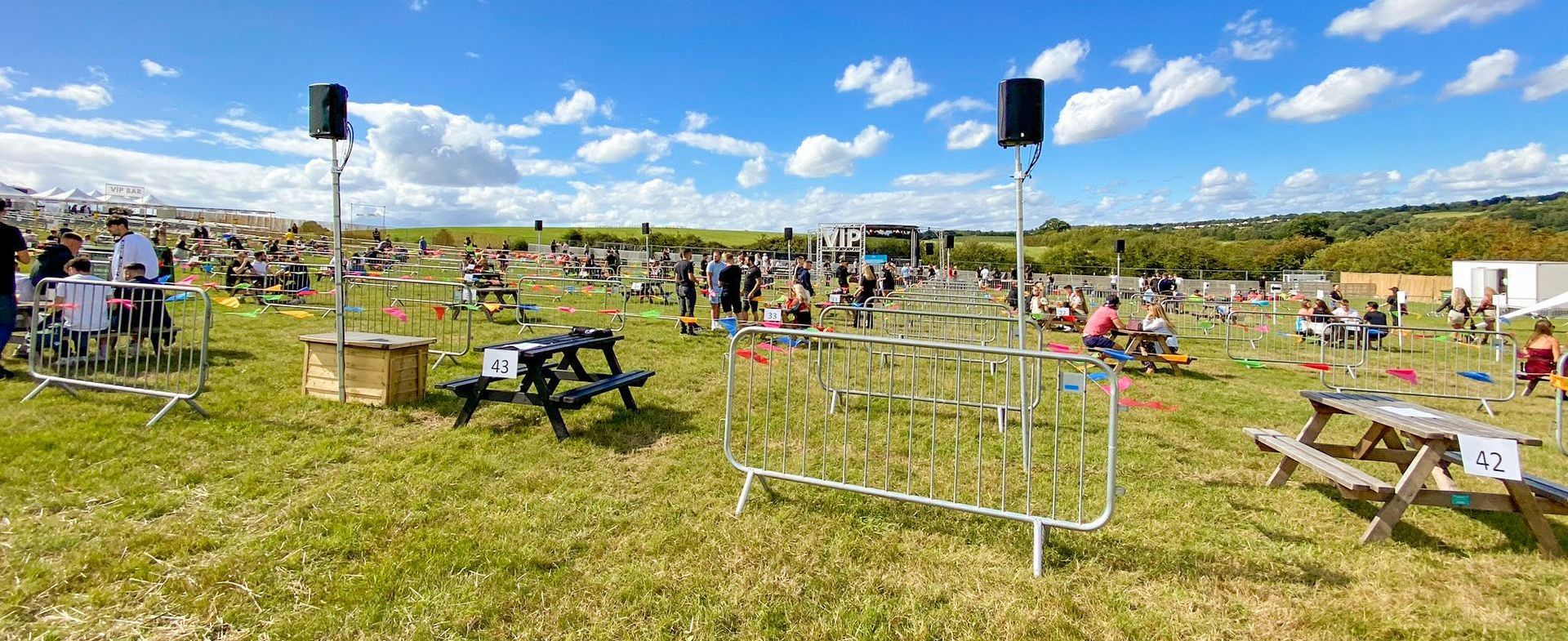
OUR SOLUTION
Normally for a venue of 100sqm we would install a large line array or ground stacked sound system either side of the stage with enough sub-bass to cover the whole venue. In some cases, we would add speakers on delay towers further down the venue to ensure the clarity of sound all the way to the back, but this is for the sound at high volumes, this system just wouldn't push sound more than 20 metres at the volume requested by the local council. But what if we had more delay towers?
Our solution to the problem was using the principle of delay towers and expanding on it. Generally, a delay tower would have several speakers attached to it, but if we scaled down the tower to a single pole with one speaker on it then the volume produced would be lower. Increasing the number of speakers on poles and spreading them out would offer the same coverage as a conventional delay tower, but at a lower volume.
The next issue was ensuring that the sound appeared to be coming from the direction of the stage. This was done by adding a small amount of delay (measured in milliseconds) to the audio signal going to the speakers (hence the term delay tower). Adding more speakers makes the delay calculations a potential problem. Nobody notices a sound system set up correctly, but a badly delayed system will bring complains from everyone.
We opted for the easy fix and set up the delay speakers in arcs, meaning each speaker in the arc is exactly the same distance away from the stage and can be set to the same delay time. Then, we can add another arc of speakers further down the venue with a different amount of delay and so on.
We planned to do this with three different arcs of speakers each with 6 speakers on poles forming the arc. This coupled with the small line array hung from the stage, we would be able to provide a system that had control over the volume from front to back of the venue.
We went back to the client and offered our package, which included and 8m x 6m covered stage and a basic lighting rig. They agreed our terms and we signed contracts. The terms were quite clear, we were working on a week by week basis, and the authorities could shut us down at any time with further restrictions, but for a year that looked like it could spell the end for many, anything for us was better than nothing.
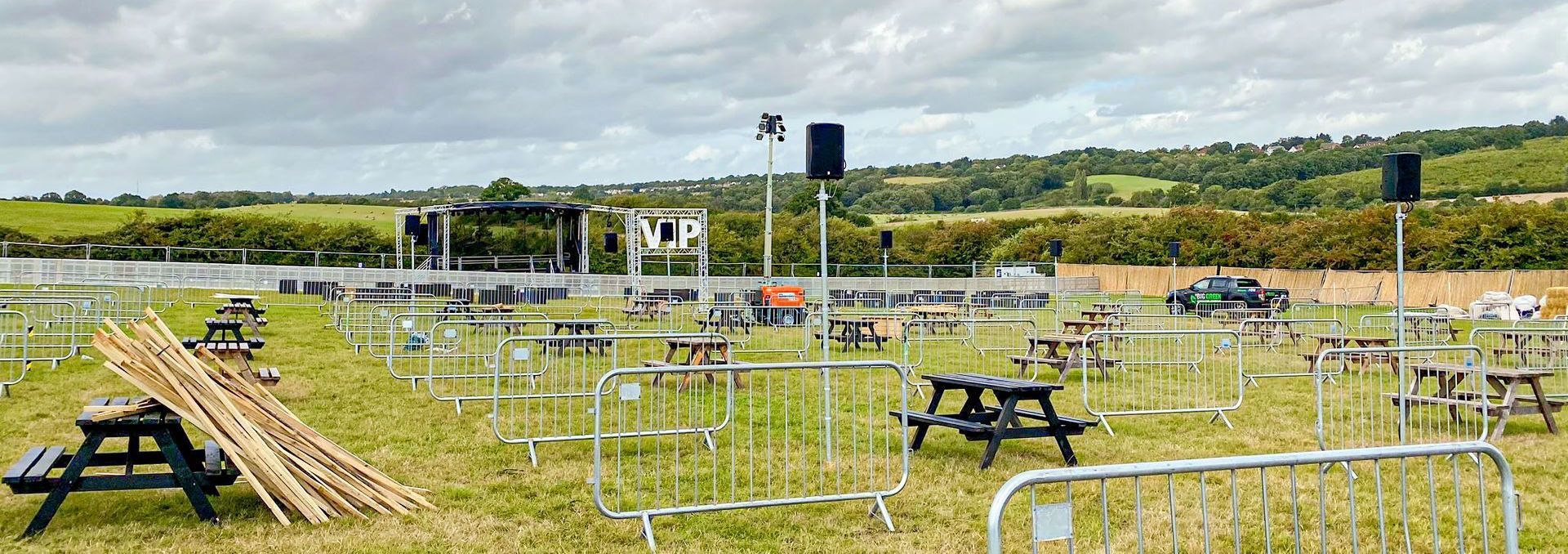
Equipment
Now all we had to do was put our plan into action and get the site rigged in less than two weeks. We needed at least eighteen speaker we could leave our in the elements for 8 weeks that could also handle the sound we wanted to produce. This was not something we currently had in stock, most of our stock was either too large or was not capable of producing the quality of sound required, but Martin had a trick up his sleeve.
Back in January of 2020, we provided two stage with production for the Chinese New Year Celebrations in London's WestEnd. For this event, we'd had some new speakers on demo from the British manufacture BishopSound. For those of you not familiar with Bishopsound, they are a small independent speaker manufacturer who design and build great sounding speakers at affordable rates. So impressed were we with the dual 8" line array system on demo we decided to not return it. We came to an agreement with them a few days later and bought the system. We had no idea at the time what the year had in store.
Having bought the line array and choosing to use it for this event as the main front of house system, it seemed silly not to ask BishopSound if they had any other speakers that would suit our needs to pack enough punch and also leave out in the wet. Andrew Bishop kindly replied to my email saying he had just the product I needed. The poly-carbonate 300w Gamma 10" speaker which was ready to pole mount and came with a foam lined metal grill that wicks the moisture away from the drivers (even in the heaviest rain). Andrew just happened to have eighteen of them left in stock and offered us a deal and we had them delivered the next day.
It was a gamble using speakers we hadn't heard of or road tested for a sound design none of us had ever tried out. All the design and specifications worked on paper, but could we get it to work in the field?
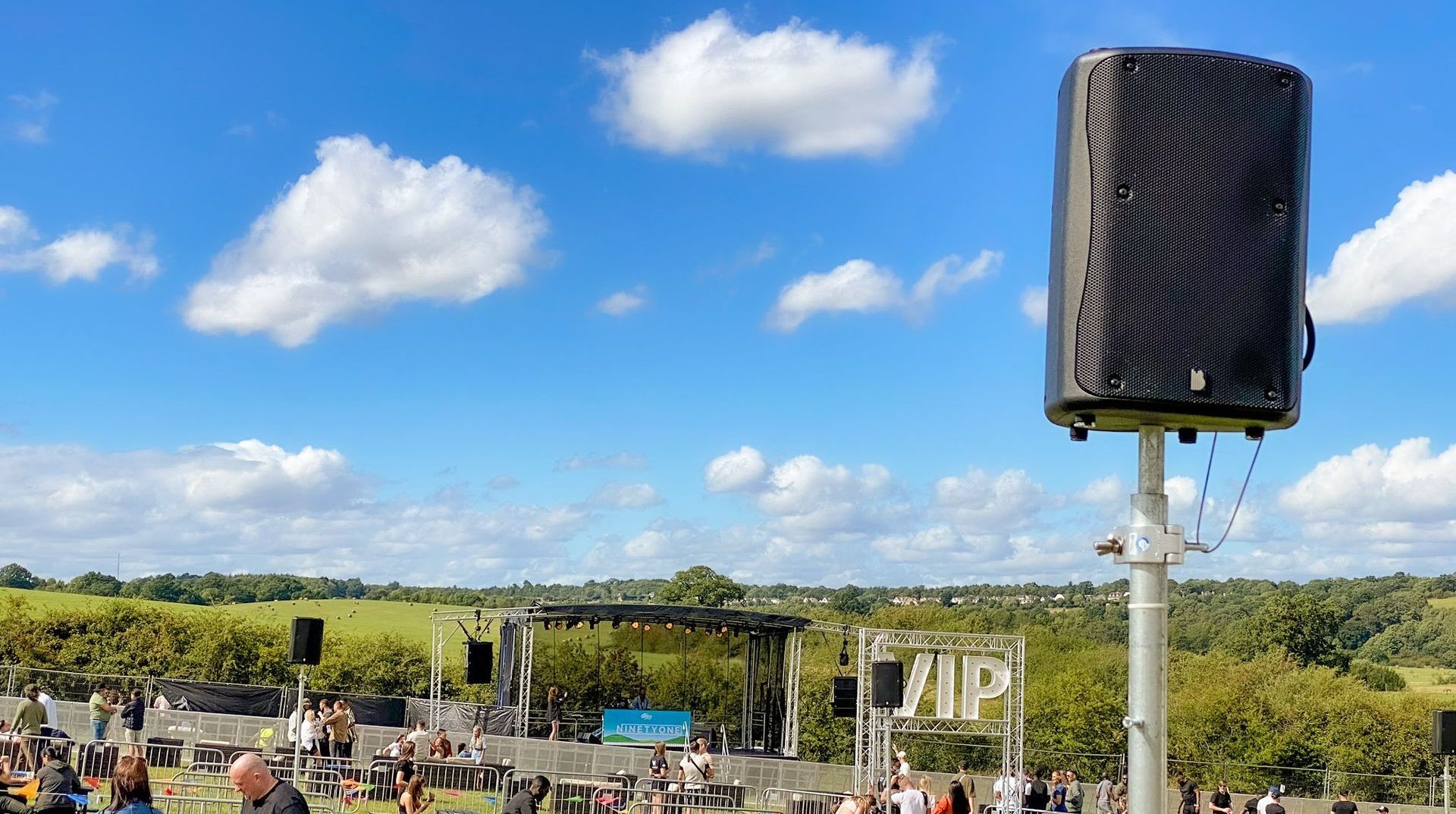
RIGGING
We had allowed three days to rig the stage, sound and lighting for the event, and test the rig. The stage and lighting was the easy bit for this event, as we used one of our 8m x 6m trailer stage with an LED parcan rig already installed, so this was ready in a couple of hours. The sound was the concern, as not only did we have to ensure it sounded good, but it had to be safe for the public.
We installed the main FOH line array hung directly from the stage, but the delay line speakers had to have a little more thought. The only sensible solution was to mount each of the eighteen delay speakers on a single pole driven into the ground with all cabling in shallow trenches on the ground. after making the appropriate inquiries and surveying the ground we install a 48mm steel tube about 1m into the ground for each speaker, with a smaller 35mm pole inside to couple the speaker onto. Each pole was finished of the bracing for safety wires to ensure the speakers could not fall.
The first arc of six speakers was set about 30m from the stage, with about 10m between each speaker. The second delay line was about 20m from the first and the final arc was another 20m from the second. We installed an amp rack in the middle of each arc in purpose-made wooden sheds. We then buried the 25mm CSA cables from the amp racks to the poles then taped and cable tied the cables up the poles to the speakers. We then trenched in a straight line front the stage down the middle of the venue to cable up all the amp racks.
This took the best part of two days to install in the rock solid ground that had been baked over the previous three weeks of hot summer weather, but we were finally ready to test the system, only to be told by the organiser's that their licence did not allow for any noise to be made before the opening day. Not what we wanted to hear, but we did run the system up at a low level to ensure our delays were in time and we had the coverage, we just weren't able to tune the system until the first day.
We had designed the system in such a way that we had control of the FOH and each delay line individually from the mixing desk. The hole system was running in mono, except for the stage monitors, as we wanted to keep the DJ's happy....
Each set of speakers was set to a group output on the mixing desk and for each days event we could vary the volume as require to each part of the venue. Not only did we have one of our team roaming the site monitoring sound levels, but we were also in contact with event control, as on some evenings the wind was carrying the sound further and even at the low levels was still enough to upset a few of the neighbours, but we were able to make adjustments and keep everyone happy.
To our relief, the whole speaker system from BishopSound worked superbly, and stood up to gale forced winds and rain for the full run of events, and now remains in stock ready for similar events in the future.
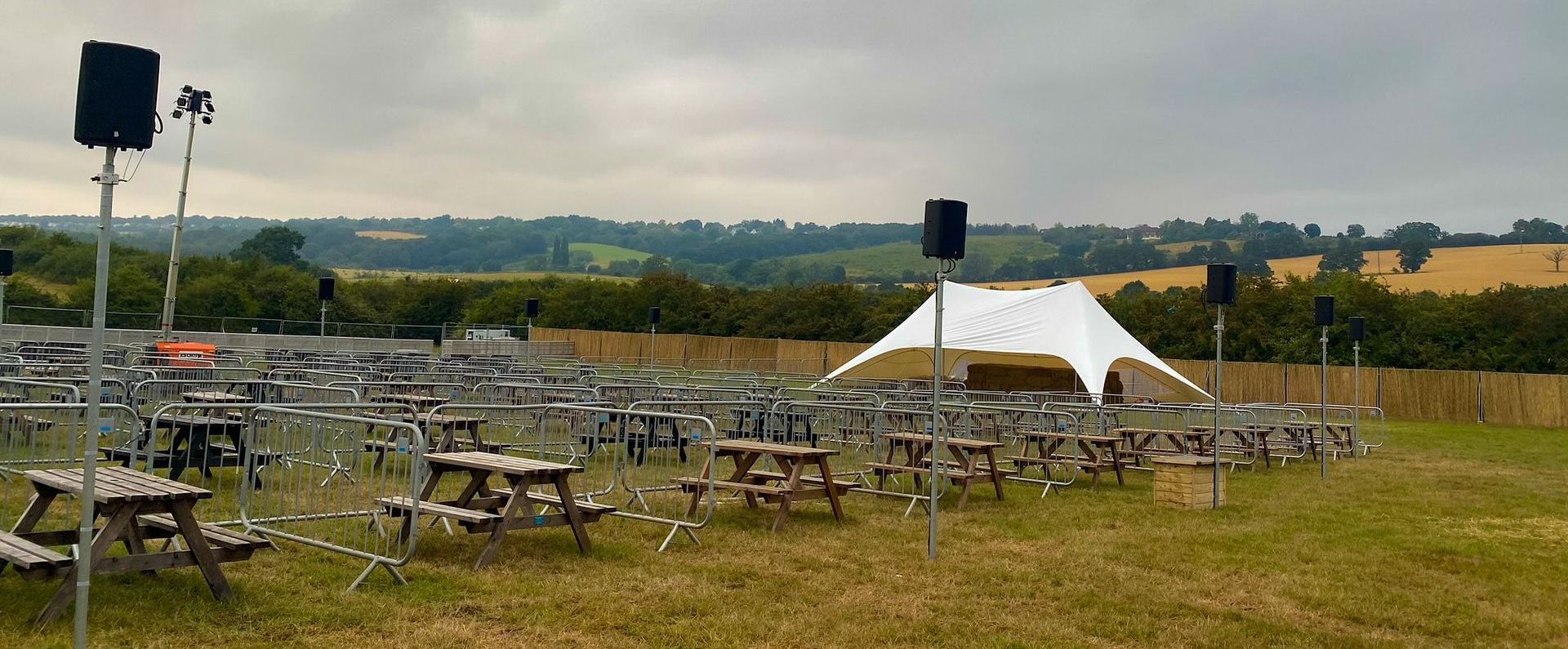
Our client approached us knowing our years of experience could produce a solution to the problem, but in these interesting times, we were asked to provide this service at a cost that reflected the reduced number of attendees.
The plan was to put on 8 weekends of festivals with different promoters producing the events each Saturday, Sunday and one bank holiday. Our client would provide the venue and the bar, the promoter would provide the entertainment and sell their tickets. As part of the venue, our client needed a stage and production for the acts to perform.
Knowing this was likely to be the only event we would be involved in for the year we had to make sure we covered the companies costs, not only for this event, but the running costs to the end of the year. The budget was tight and negotiations started, but we were confident we could offer a package that would meet the criteria of the authorities as well as the needs of our client.



